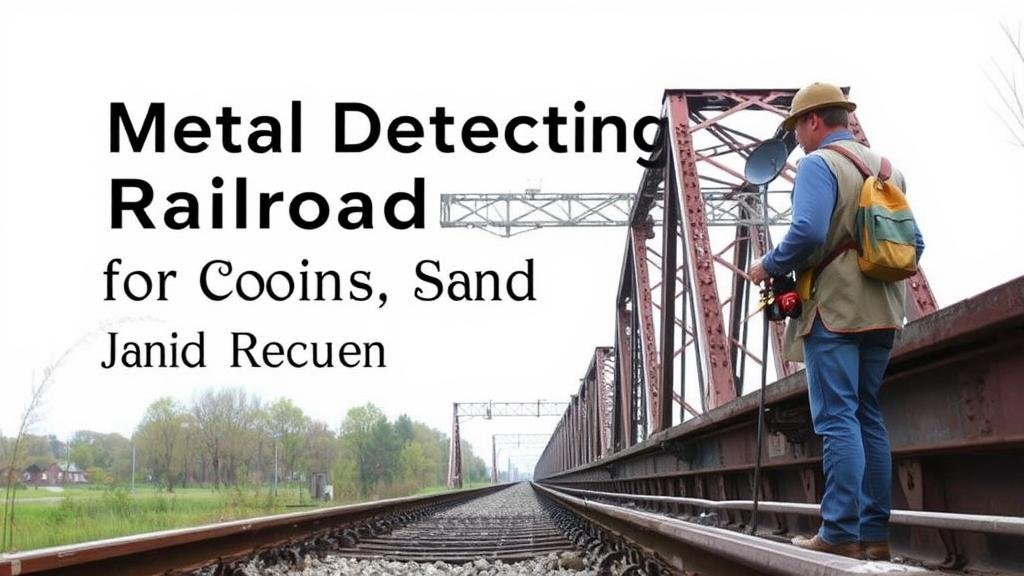Metal Detecting in Railroad Bridges for Coins and Lost Equipment
Metal Detecting in Railroad Bridges for Coins and Lost Equipment
Metal detecting has become an engaging hobby for many enthusiasts, particularly in historical and industrial areas where lost treasures may be found. One such area of opportunity lies within railroad bridges. These structures, built across decades, often house forgotten items, from coins lost by travelers to tools left behind by workers. This article explores the practice of metal detecting in railroad bridges, detailing best practices, potential finds, and legal considerations.
The Rich History of Railroad Bridges
Railroad bridges have served as vital arteries for transportation, connecting communities and facilitating commerce since the 19th century. Constructed using durable materials like steel and iron, these bridges often span waterways, valleys, and urban areas. Over the years, numerous individuals have traversed these bridges, leading to a likelihood of losing personal items such as coins or tools. In fact, according to a study by the American Railway Engineering and Maintenance-of-Way Association (AREMA), approximately 3.3 billion trips across bridges are recorded annually, each trip presenting a potential for lost objects.
What Can Be Found?
When conducting metal detecting operations at railroad bridges, a variety of items may be uncovered, typically categorized as follows:
- Coins: Historical coins can tell tales of past travelers. For example, a detectable range includes everything from Lincoln pennies to rare silver dollars, many of which can date back to the bridges construction period.
- Tools and Equipment: Workers have often left behind tools such as wrenches, hammers, and other equipment. In 2018, a metal detector hobbyist in Illinois discovered a set of vintage railway hand tools in a decaying bridge, valuable both historically and monetarily.
- Artifacts: Items like jewelry or personal belongings can also surface. In 2015, a detectorist in Pennsylvania found a silver pocket watch underneath an old railroad bridge, shedding light on the life of its former owner.
Legal Considerations
Before embarking on any metal detecting venture, its imperative to understand the legal landscape. The rules surrounding metal detecting can differ significantly from one jurisdiction to another. In general, these guidelines should be followed:
- Seek Permission: Always obtain permission from property owners, which commonly includes the railroad company or local government. Failure to do so can result in legal repercussions.
- Know the Law: Understand local laws related to metal detecting. Many areas have prohibitions against searching in state-owned properties, including infrastructure like bridges.
- Historical Items: If artifacts of significant historical value are found, they may legally require reporting to local authorities or historical committees.
Best Practices for Metal Detecting
To increase the likelihood of having a successful experience, consider the following best practices:
- Research: Before visiting a site, conduct thorough research on the bridge’s history and past activities. Resources like historical archives and local libraries can provide invaluable insight.
- Use the Right Equipment: Employ a metal detector that is suited for the environment, such as one that excels in detecting small items in highly mineralized soil. A pulse induction model is often recommended for areas with a lot of trash signals.
- Practice Patience: Metal detecting is as much about persistence and patience as it is about skill. Take the time to thoroughly search areas that seem promising, and be prepared to dig carefully and respect the site.
Real-World Applications and Case Studies
Numerous stories from practitioners highlight the excitement and historical significance associated with metal detecting. One notable case involved a metal detector enthusiast in Virginia who uncovered a stash of Confederate coins hidden beneath a bridge used during the Civil War. This discovery not only had personal value but contributed to regional historiography regarding the financial practices of soldiers at that time.
In another instance, a group of metal detectorists unearthed various tools around an abandoned railroad bridge in Ohio, shedding light on the components used during the railways golden age. Such finds inspire deeper local and familial historical studies, bringing lost narratives back to the forefront.
Actionable Takeaways
For those interested in metal detecting at railroad bridges, the following takeaways will help guide your efforts:
- Research the history and permissions necessary for accessing the site.
- Equip yourself with a reliable metal detector and appropriate tools.
- Exercise patience and attentive digging techniques to preserve the integrity of the site.
- Consider the historical significance of potential finds and understand the legal responsibilities associated with them.
By adhering to these guidelines and embracing the adventure, metal detecting at railroad bridges can be a fulfilling pursuit that reveals both personal treasures and broader historical context.


